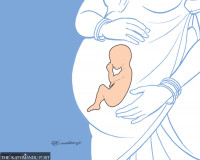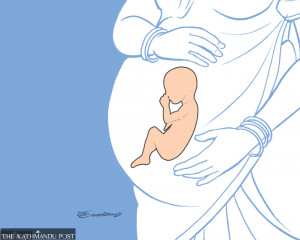Health
Recommendations on virus response have gone unheard almost every time, officials say
As cases continue to spike, government authorities have failed to take strong measures and abide by the suggestions based on data and investigations.
Arjun Poudel
For two months now, the Covid-19 Crisis Management Centre has been generating the heat map of the country’s coronavirus daily cases. Based on the data provided by the Epidemiology and Disease Control Division, the technical staff at the centre update the heat map, identifying red zones and emerging hotspots. The map is then shared with ministry officials and higher authorities for devising a plan of action.
The plan includes whether to seal those areas or increase the number of tests or expand contact tracing. Recommendations are made accordingly.
But the higher authorities barely pay heed to the recommendations, according to officials at the centre, which was formed a little over six months ago to fight the pandemic.
On Sunday, the centre identified 32 red zones in the Kathmandu Metropolitan City including Teku, Naxal, Lazimpat, Maharajgunj, Baluwatar, Tangal, Boudha, Mitra Park, Jaya Bageshwori, Gaushala, New Baneshwor, Tripureshwor, Kalimati, Kalanki, Swayambhu, Sorakhutte and Chhetrapati.
The centre also identified 10 hotpots with the maximum number of infections–Naradevi, Dhokatole, Bhimsensthan, Lagan, Sankata, Om Bahal, Makhan, Bangemudha, Dilli Bazar and Gyaneshwor.
The centre officials say these areas should be sealed followed by massive testing and tracing efforts to break the chain of the virus transmission. But our prescriptions continue to be ignored, according to them.
“At the time of lifting the prohibitory orders, we presented the heat map of the hotspots at the meeting of a high-level committee and proposed to seal the areas and increase tests, but our suggestions were ignored then and they continue to be ignored now,” said an official at the centre requesting anonymity as he was not allowed to speak to the media.
There were only three to four hotspots in Kathmandu Valley four weeks ago, when the prohibitory orders were lifted, according to the official.
In areas such as Kalimati and Teku, which were reporting new cases, it was found that most of the cases were detected among returnees from India or who had recently arrived from hotspots in some Tarai districts.
Following the government decision to lift the prohibitory orders, many people had returned to the Capital to resume their work, and according to officials, records show that most of these new cases were amongst fruits and vegetable vendors and scrap collectors, among others.
“Had they paid heed to our suggestions and enforced restrictions in those particular areas, infections would not have spread at the current scale,” said the official. “Now, there are hotspots in every ward of the metropolitan and other local levels of the Valley.”
Besides updating the heat map daily, the centre has also developed an app for contact tracing, which was launched five months ago. Officials say the Health Ministry, however, has not shown interest in using the app. The tool can be of great help in ensuring effective contact tracing, according to officials.
Last week, the Covid-19 Crisis Management Centre, which is led by Minister for Defence Ishwar Pokhrel, presented an updated heat map of coronavirus cases in Kathmandu Valley at its meeting. Until Wednesday, Pokhrel was also the minister for defence.
The centre also presented a report on the occupancy of general beds and availability of intensive care unit beds and ventilators, but the ministers who attended the meeting could not reach any decision and forwarded the reports to the Cabinet for further review.
But on Monday, the Cabinet did not address any of the centre’s concerns. It instead decided to lift restrictions on public transportation, allowing them to run in full capacity.
The same day, the Health Ministry declared all 13 state-run hospitals in the Valley as Covid-19 hospitals.
However, government hospitals in the Valley said that the idea is not feasible.
“We are waiting for the official letter, work procedure and guideline to completely focus on Covid-19,” Dr Dirgha Raj RC, director at the Civil Hospital, told the Post. “We also need human resources, financial resources for safety gears, personal protective equipment and time to buy other equipment.”
The hospital, which has been providing services to around two dozen Covid-19 patients, said that dozens of its health workers have contracted the virus and are on leave. “Right now, we do not have beds for patients infected with coronavirus,” he added. “Even if the government provided us with all the resources, it would take more than a month to prepare a facility to admit infected patients.”
Tribhuvan University Teaching Hospital, which has allocated over 150 beds for Covid-19 patients said that the new decision to convert the hospital into a completely Covid-19-focussed hospital is not possible, as the hospital cannot deny services to other non-Covid-19 patients.
“We cannot deny intensive care service to anyone, who is in need,” Dr Dinesh Kafle, executive director at the hospital, told the Post. “We cannot refuse dialysis services to renal patients or attend to patients suffering from head injuries, and we can’t expel the burn victims from the hospital and deny appendicitis surgery, for instance.”
The hospital has added 14 intensive care unit beds to address the growing demands of the Covid-19 patients, but it will take at least two months to prepare the facility, as the hospital has to follow a public procurement process, bring equipment from India, according to the hospital administration.
“A lot of patients, who spent all their money in private hospitals, have been waiting for beds in our hospital’s emergency,” said Kafle. “They are not in a position to afford service in a private hospital. How can we deny services to them?”
Officials say the higher authorities have been ignoring the suggestions from the initial days when the cases had just started to appear.
“The centre’s recommendations have been ignored right from the beginning,” an official at the Health Ministry told the Post. “Due to the higher authorities’ indifference towards scientific suggestions, we have come to this stage of the pandemic.”
Home Minister Ram Bahadur Thapa; Federal Affairs and General Administration Minister Hridayash Tripathi; Industry, Commerce and Supplies Minister Lekhraj Bhatta; Health and Population Minister Bhanubhakta Dhakal; the Finance Minister; Agriculture Minister Ghanashyam Bhusal; Foreign Minister Pradeep Gyawali; Energy Minister Barshaman Pun; and Culture Tourism and Civil Aviation Minister Yogesh Bhattarai are in the directive committee of the centre.
Epidemiologists and infectious disease doctors have long been lamenting that the Oli administration doesn’t listen to experts or acknowledge science-guided strategies. The government has made several mistakes in the past, and it continues to repeat the same mistakes, according to them.
On Wednesday, Nepal’s coronavirus tally hit 117,996, with 675 deaths. In the last 24 hours, the Health Ministry said 2,638 new cases, including 1,403 cases in Kathmandu Valley, were reported.
With the festival season just around the corner, public health experts are concerned about the massive spread of the virus, as people will start travelling.
The Health Ministry has proposed declaring Dashain holidays from Saturday, six days before the stipulated holiday period starts, and enforcing a “semi-lockdown”.
“That’s our proposal, but it’s up to the Cabinet,” said Dr Roshan Pokhrel, chief specialist at the Health Ministry. “We, however, believe that the infection rate will come down if our recommendations are implemented.”
The ministry a few weeks ago had recommended a lockdown if the number of active cases hit the 25,000 mark. The country surpassed that target on October 8. The number of total cases on October 10 crossed the 100,000 mark. The number of total active cases stand at 36,367 as of Wednesday.
Public health experts say the authorities have been making ad-hoc decisions for months, without realising the bigger danger that lies ahead.
“When the restrictions were needed to contain the virus transmission in particular areas, we lifted the restrictions,” said Dr Prabhat Adhikari, an infectious disease and critical care expert. “As cases started to rise at an alarming rate, there should have been a lockdown based on case investigation and contact tracing.”




 17.67°C Kathmandu
17.67°C Kathmandu














